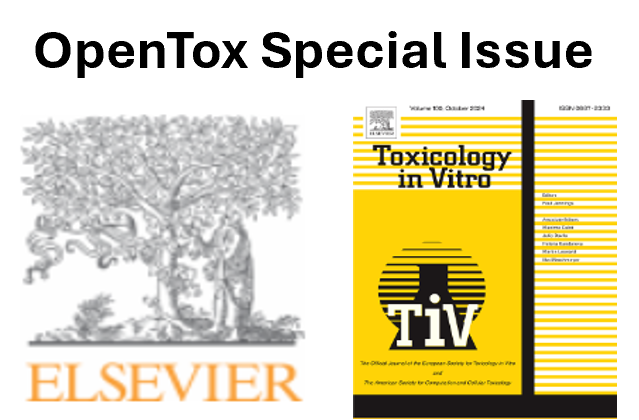
Dr. Kunal Roy is Professor & Ex-Head in the Department of Pharmaceutical Technology, Jadavpur University, Kolkata, India (https://sites.google.com/site/kunalroyindia). He has been a recipient of Commonwealth Academic Staff Fellowship (University of Manchester, 2007) and Marie Curie International Incoming Fellowship (University of Manchester, 2013) and a former visiting scientist of Istituto di Ricerche Farmacologiche "Mario Negri" IRCCS, Milano. Italy. The field of his research interest is Quantitative Structure-Activity Relationship (QSAR) and Molecular Modeling with application in Drug Design, Property Modeling and Predictive Ecotoxicology. Dr. Roy has published more than 380 research articles (ORCID: http://orcid.org/0000-0003-4486-8074) in refereed journals (current SCOPUS h index 55; total citations to date more than 15000). He has also coauthored two QSAR related books (Academic Press and Springer), edited six QSAR books (Springer, Academic Press and IGI Global) and published more than ten book chapters. Dr. Roy is the Co-Editor-in-Chief of Molecular Diversity (Springer Nature) and an Associate Editor of Computational and Structural Biotechnology Journal (Elsevier). Dr. Roy serves in the Editorial Boards of several International Journals including (1) European Journal of Medicinal Chemistry (Elsevier); (2) Journal of Molecular Graphics and Modelling (Elsevier); (3) Chemical Biology and Drug Design (Wiley); (4) Expert Opinion on Drug Discovery (Informa). Apart from this, Prof. Roy is a regular reviewer for QSAR papers in the journals like Chemosphere (Elsevier), Journal of Hazardous Materials (Elsevier), Ecotoxicology and Environmental Safety (Elsevier), Journal of Chemical Information and Modeling (ACS), ACS Omega (ACS), RSC Advances (RSC), Molecular Informatics (Wiley), SAR and QSAR in Environmental Research (T&F), etc. Prof. Roy has been recipient of several awards including AICTE Career Award (2003-04), DST Fast Track Scheme for Young Scientists (2005), Bioorganic and Medicinal Chemistry Most Cited Paper 2003-2006, 2004-2007 and 2006-2009 Awards from Elsevier, The Netherlands, Bioorganic and Medicinal Chemistry Letters Most Cited Paper 2006-2009 Award from Elsevier, The Netherlands, Professor R. D. Desai 80th Birthday Commemoration Medal & Prize (2017) from Indian Chemical Society, etc. Prof. Roy has been a participant in the EU funded projects nanoBRIDGES and IONTOX apart from several national Government funded projects (UGC, AICTE, CSIR, ICMR, DBT, DAE). Prof. Roy has recently been placed in the list of the World's Top 2% science-wide author database (2023) (World rank 55 in the subfield of Medicinal & Biomolecular Chemistry) (Ioannidis, John P.A. (2024), "August 2024 data-update for "Updated science-wide author databases of standardized citation indicators", Elsevier Data Repository, V7, link: https://elsevier.digitalcommonsdata.com/datasets/btchxktzyw/7).
In silico toxicity predictions using the quantitative read-across (q-RA) and quantitative read-across structure-activity relationship (q-RASAR) approaches
Kunal Roy* and Arkaprava Banerjee
Drug Theoretics and Cheminformatics Laboratory, Department of Pharmaceutical Technology, Jadavpur University, 188, Raja S. C. Mallick Road, 700032 Kolkata, India
Quantitative Structure-activity Relationship (QSAR) models predict certain activities/properties/toxicities of a set of compounds under a given experimental condition using chemical structural and property information in a supervised learning approach. Quantitative Read-Across (q-RA) - based predictions are based on (chemical or biological) similarity to close congeners, not model-derived predictions. Both the QSAR and Read-Across approaches are extensively used for data gap filling (predicting activity/property/toxicity values for compounds devoid of experimentally measured endpoint values), thus minimizing the need for experimental testing, animal handling, manpower, time, and cost. Recently, QSAR and read-across techniques have been merged into a new emerging field of quantitative read-across structure-activity relationship (q-RASAR) [1] that uses the chemical similarity concepts of read-across (an unsupervised step) and finally develops a supervised learning model (like QSAR) using machine learning algorithms. Recently, our group has developed a q-RASAR workflow for quantitative predictions using Euclidean distance, Gaussian kernel, or Laplacian kernel-based similarity for RASAR descriptor calculations followed by data fusion with important physicochemical/structural descriptors and development of a q-RASAR model with the application of an appropriate statistical method or machine learning application. The tools for RASAR descriptor calculations and optimization of hyperparameters have been made available at https://sites.google.com/jadavpuruniversity.in/dtc-lab-software/home. With the applications in modeling several endpoints like materials properties, toxicity, and ecotoxicity of chemicals, drugs, and mixtures [2, 3, 4], we demonstrate that the q-RASAR approach enhances the external predictivity of conventional QSAR models with the same level of chemical information. In addition, the models show the importance of several RASAR descriptors like RA score, gm, and average similarity, which are computed initially based on the available structural and physicochemical information. A q-RASAR model also has the advantage over read-across predictions in providing straightforward interpretation and indicating quantitative contributions of important chemical features. In addition, the novel Arithmetic Residuals in K-groups Analysis (ARKA) descriptors [5] can potentially identify activity cliffs, less confident data points, and less modelable data points, which could be analyzed in a data set before performing the QSAR/q-RASAR analysis. It appears that the q-RA, q-RASAR, and ARKA approaches should be extensively applied for modeling various activity/property/toxicity endpoints for the development of reproducible, transferable, and predictive models with applications in pharmaceutical, agricultural, food, materials, and nanosciences.
- Luechtefeld, T.; Marsh, D.; Rowlands, C.; Hartung, T Toxicol. Sci. 165, 2018, 198-212.
- Banerjee, A.; Roy, K Mol. Divers. 26, 2022, 2847-2862.
- Banerjee, A.; De, P.; Kumar, V.; Kar, S.; Roy, K Chemosphere, 309, 2022, 136579.
- Banerjee A.; Gajewicz-Skretna A.; Roy K. Mol. Inform. 2023, 42, 2200261.
- Banerjee A.; Roy, K. Environ. Sci. Process Impacts, 2024,26, 991-1107.

